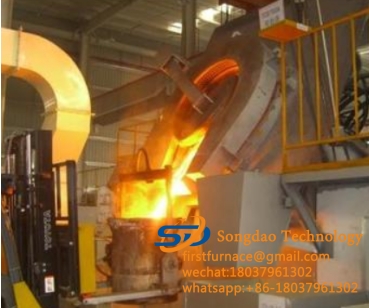- 27
- Jul
Melting, refining and deoxidation of steel and scrap
- 28
- Julai
- 27
- Julai
Melting, refining and deoxidation of steel and scrap
After the charge is fully melted, decarburization and boiling are generally not carried out. Although it is possible to add mineral powder or blow oxygen to decarburize, there are many problems and it is difficult to guarantee the life of the furnace lining. As for dephosphorization and desulfurization, dephosphorization is basically not possible in the furnace; a part of sulfur can be removed under certain conditions, but at a high cost. Therefore, the most appropriate method is that the carbon, sulfur, and phosphorus in the ingredients meet the requirements of the steel grade.
Deoxidation is the most important task of induction furnace smelting. In order to obtain a good deoxidation effect, the slag with suitable composition should be selected first. Induction furnace slag has a low temperature, so slag with a low melting point and good flow should be selected. Usually 70% lime and 30% fluorite are used as alkaline slag materials. Since fluorite volatilizes continuously during the smelting process, it should be refilled at any time. However, considering the corrosive effect and penetration effect of fluorite on the crucible, the addition amount should not be too much.
When smelting steel grades with strict requirements for inclusion content, the early slag should be stripped off and new slag should be produced, the amount of which is about 3% of the material quantity. When smelting certain alloys containing high and easily oxidizable elements (such as aluminum), a mixture of table salt and potassium chloride or crystal stone can be used as the slagging material. They can quickly form thin slag on the metal surface, thereby isolating the metal from the air and reducing the oxidation loss of alloying elements.
The induction furnace can adopt precipitation deoxidation method or diffusion deoxidation method. When adopting precipitation deoxidation method, it is best to use composite deoxidizer; for diffusion deoxidizer, carbon powder, aluminum powder, silicon calcium powder and aluminum lime are used. In order to promote the diffusion deoxidation reaction, the slag shell should be mashed frequently during the smelting process. However, in order to prevent the diffusion deoxidizer from penetrating into the molten steel in large quantities, the slagging operation should be carried out after its melting. The diffusion deoxidizer should be added in batches. Deoxidation time Should not be shorter than 20 mino
Aluminum lime is made of 67% aluminum powder and 33% powdered lime. When preparing, mix the lime with water and then add the aluminum powder. Stir while adding. A large amount of heat will be released during the process. After mixing, let it cool and serve. It must be heated and dried (800Y) before use, and it can be used after about 6 hours.
The alloying of induction furnace smelting is similar to that of electric arc furnace. Some alloying elements can be added during charging, and some can be added during reduction period. When the steel slag is completely reduced, the final alloying operation can be carried out. Before adding the easily oxidizable elements, the reducing slag can be removed completely or partially to improve the recovery rate. Due to the effect of electromagnetic stirring, the added ferroalloy generally melts faster and distributes more uniformly.
The temperature before tapping can be measured with a plug-in thermocouple, and the final aluminum can be inserted before tapping.

